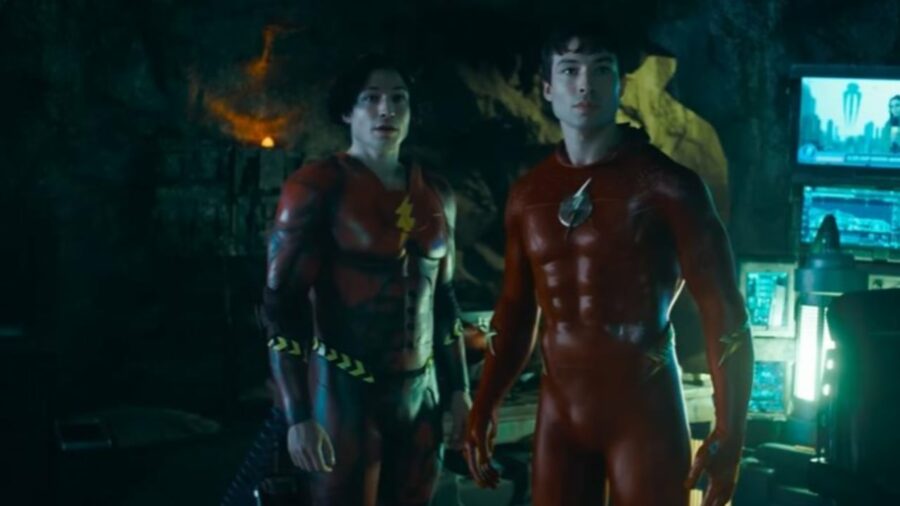Review of DC Studios’s The Flash
DC Studios has seemingly always remained a step behind its rival studio Marvel, both critically and financially.
With four Marvel films in the top 10 highest-grossing films of all time and DC not even making the top 30, the studio has struggled with gaining positive reception from fans and critics despite being home to some of the most beloved franchises.
The highest-grossing DC film thus far coming at number 35 is The Dark Knight Rises which isn’t even a part of the current DCU timeline.
Just a year after the success of the Dark Knight trilogy, the formulation of the DCU commenced with Man of Steel introducing audiences to Henry Cavill as Superman.
Three years later we watched Cavill battle Ben Affleck as Batman (Batfleck as fans call him) in Batman V. Superman: Dawn of Justice. A film that performed well financially but failed to secure a lot of audience faith in the continuation of the DCU.
This lack of faith was only perpetuated by the release of Suicide Squad. Many fans and critics flocked to these versions of Harley Quinn and Deadshot (played by Margot Robbie and Will Smith) but recoiled in disgust at Jared Leto’s Joker.
2017’s Wonder Woman brought in some positive reception for the studio as the film is the highest critically rated DCU film on Rotten Tomatoes at 93% but this positivity quickly dwindled after the release of Justice League which failed to generate many positive reviews.
Hope for the DCU was revived once again when acclaimed director James Gunn infiltrated the studio, becoming Co-CEO a little over a year after the successful release of The Suicide Squad in 2021.
Now in 2023, Gunn has announced plans to take the DCU in a new direction including a recast of Superman, a united storyline in film, television, and gaming as well as a universe reset initiated by The Flash.
With Gunn’s praise, the return of Michael Keaton as an AU Batman, and Sasha Calle introducing this universe’s iteration of Supergirl it seemed that The Flash was set up for success.
Unfortunately, much like many of its predecessors, The Flash failed to live up to its expectations with laughable CGI, lackluster writing, and of course, too much Ezra Miller.
With all the controversy surrounding Miller, It really is fitting that the The Perks of Being a Wallflower star played this version of Barry Allen’s Flash considering he’s easily the most unlikable member of the Justice League.
The opening scene in which The Flash teams up with Batfleck and Gal Gadot’s Wonder Woman (who first appears on screen in an entirely upskirt angle), features some of the most cringeworthy superhero action to date.
By the time the audience has moved on from the atrocity of the opening scene we’re introduced to the speedforce, an enclosed bubble of time achieved when The Flash runs faster than the speed of light.
It’s here that Barry aims to fix the most traumatic event of his life: the death of his mother and the subsequent imprisonment of his father.
Like most time travel/multiverse movies, Barry seems to have found his own personal paradise with his mom alive and his dad out of jail, that is until he meets easily the most horrifically annoying character in the film…a younger version of himself.
If you thought 20-something Barry was insufferable, 18-year-old Barry will crush your spirits instantly by emulating every single millennial stereotype (while not even being a millennial) and overall acting like a hyperactive toddler whenever he’s on screen.

Viewers might be temporarily uplifted by the return of Michael Keaton as Bruce Wayne who is basically forced to become this universe’s Batman again because of Barry’s actions, but his solid performance and screen presence fades into the background of the film’s chaos.
Sasha Calle also delivers a compelling Supergirl despite some of her fight scenes being mostly poorly rendered CGI which is why her fate at the end of the film (as well as Keaton’s) is so infuriating.
As for the antagonist of the film (if you don’t count the Barrys), The Flash recycles General Zod with even higher stakes as Barry’s universe tampering has caused half of the Justice League to not even exist.
Viewers soon realize however, that these stakes actually don’t matter because of the timeline’s predestined path, creating the most cliche, overdone time travel narrative instead of utilizing the sub-genre’s familiar tropes to cultivate something subversive and fresh.
The end of the film features a semi-sweet scene between Barry and his mom but this is immediately undone by a shameful cameo when Barry returns to his original timeline.
Though the film is full of cameos and references, the most shocking was certainly saved for last. Let’s just say that if you’re a major Batman fan your jaw will be on the floor in shock and disgust.
It’s hard to understand why a visionary director like James Gunn would actively praise a film like this though it was mostly done to promote a positive tone as this era of the DCU comes to a close. So that begs the question: what’s next?
Next in line for the DCU is Blue Beetle, a hero that has yet to make his big screen debut. Despite The Flash’s failure, many fans are excited to see this next installment while skeptical if it can deliver what The Flash and other DCU films have lacked.
Major DCU fans might deem a viewing of The Flash necessary but casual superhero movie-goers might want to give this one a skip as the film offers nothing original. A rewatch of Spiderverse though? Now that’s a film you’ll never get tired of.

